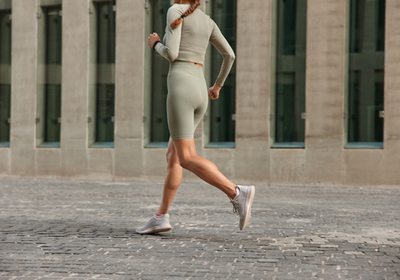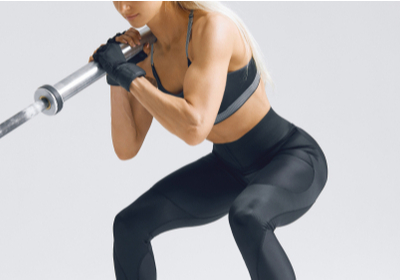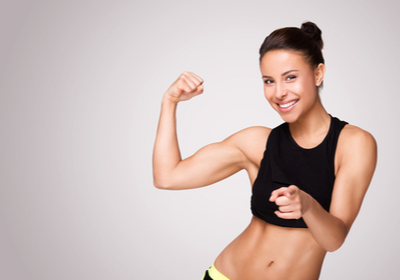VIDEO
Superman Sweep
- Arms
- Back
- Legs
- Trapezius
- Gluteus
Level:Intermediate
Trainer:Amanda Williams
Equipment:Yoga Mat, Sliding Discs
Superman Sweep
- Arms
- Back
- Legs
- Trapezius
- Gluteus
Level:Intermediate
Trainer:Amanda Williams
Equipment:Yoga Mat, Sliding Discs
Use sliding disks. Lie on the floor face down. Take sliding disks and put them up and down.
save to ...
RECOMMENDED FOR YOU
- Core
- Arms
- Legs
Duaration: 00:15
save to playlist
- Core
- Legs
- Abs
Duaration: 00:14
save to playlist
- Core
- Arms
- Legs
Duaration: 00:15
save to playlist
- Core
- Legs
- Abs
Duaration: 00:15
save to playlist
- Abs
- Biceps
- Triceps
Duaration: 00:15
save to playlist
- Core
- Arms
- Legs
Duaration: 00:15
save to playlist
- Core
- Legs
- Abs
Duaration: 00:14
save to playlist
- Core
- Biceps
- Triceps
Duaration: 00:27
save to playlist
- Core
- Arms
- Legs
Duaration: 00:13
save to playlist
- Core
- Back
- Biceps
Duaration: 00:13
save to playlist
- Abs
- Gluteus
- Hamstrings
Duaration: 00:15
save to playlist
- Core
- Legs
- Abs
Duaration: 00:15
save to playlist
- Core
- Arms
- Legs
Duaration: 00:15
save to playlist
- Core
- Arms
- Legs
Duaration: 00:15
save to playlist
- Biceps
- Triceps
- Trapezius
Duaration: 00:14
save to playlist
- Core
- Arms
- Legs
Duaration: 00:15
save to playlist
- Core
- Legs
- Gluteus
Duaration: 00:15
save to playlist
- Core
- Legs
- Abs
Duaration: 00:15
save to playlist
Blog
In the initial stages of training, while people focus on working the chest, arms, and back, the calf muscles are often neglected. As a result, exercises to strengthen the calves are delayed or rarely performed, resulting in a lack of progress. The calf muscles, like the deeper muscles of the back, get little rest during the day because they must support the weight of the body, help maintain balance, and stabilize the joints when walking. This means it is at a lower level of development and the approach to working with it should be different.
Thus, we decided to share some exercises for strengthening your calves. Let’s check them out.
Calf 45
Of all the exercises intended to develop the calf muscles, this exercise is one of the most challenging. It involves changing the angle of the legs, which involves not only the calves but also the soleus muscles. To perform this exercise, you will need the Gackenschmidt's Machine. Depending on the design, you will stand in front of it or not. Set an appropriate working weight. This is calculated as the arithmetic mean of the working weights from the previous two exercises. Then adjust the weights according to the load. Then lower the heel and stretch the calf as much as possible. Lift with the toes. Hold under extreme tension for 1-2 seconds.
Dumbbell Calf Raises
This exercise is designed for all levels of athletes and is considered a basic exercise to build calf muscles. Start with standing on a wooden block. You can do this in Smith by placing a step platform under your feet and placing a barbell on your shoulders. Hold your body in a straight position. If you need extra weight, you should take dumbbells or kettlebells. Next, lower your heels under the bar and stretch your ankles as much as possible. Stand up on your toes in a powerful impulsive movement. Hold this position for 1-2 seconds and pull your calves up. Slowly lower yourself back to the starting position.
Squat Calf Raises
This exercise is great for lazy workouts and will be a great option for beginners. Sit on the seat of the training machine. Place your toes on the support step. Bringing your heels down to the floor as far as possible, lower the lever with the soft stop to your knee and lock it.
Leg Press
Lie down on a leg press machine. Find a platform where your legs are straight. Fix the speed. You only need to do two movements. Removing the platform from your foot, squeeze it with your toes. Return your toes to their original position.
It is important to know that posture has a much greater impact on the development of the shin and calf muscles than movement. Flat feet, if not taken into account and compensated for, can also prevent the shaping of the calves. To improve the calves without exercising, the selection of the proper footwear and a corrected gait is necessary.
Well-trained calves will help you perform certain exercises better as well as make your legs look great. So take another look at these exercises and be sure to try them next time.
Read more
The Kardashians have created many beauty trends, one of which is having beautiful buttocks. So, in this article, we'll talk about building great gluteus muscles so you can look as attractive as Kim, Kourtney, and Khloe. Let's begin by looking at the anatomy. The glutes are made up of three main parts.
The gluteal maximum muscles, which are the largest muscles in the body, help to maintain balance when walking and running. They allow your legs to move sideways and are also responsible for contouring the shape of the buttocks.
The gluteus medius is overlaid in part by the gluteus maximus and is located at the top of the pelvis. It is involved in leg extension, lateral flexion, and body stabilization during the movement.
Finally, below is the gluteus minimus. Both are in charge of leg induction and body stabilization, as well as shaping the thigh line.
Training for the glutes
Building your glute muscles isn't easy, particularly when you're on a tight schedule. However, by working out at least three times a week and never giving up, you will quickly reach your goal. To help you achieve your goals, we've compiled the best exercises for your gluteus muscle development.
Deep squat with a barbell
This is one of the basic exercises that help to develop this muscle effectively. From the starting position - with your feet apart - lower your pelvis below the knees. Keep your lower back straight and make sure the knees do not go over your feet. Spreading your legs wider apart puts more pressure on your hips.
Romanian deadlifts
Stand up straight with a slight bend at the waist. Holding the dumbbells in both hands, bend over and pull your pelvis backward. Reaching a point just below your knees, return to start.
Dumbbell split squat
Exercise with a straight back and one leg stepping forward while the other leg is thrown into a brace behind you. Squat down and perform the exercise with both legs.
Back lunges
From the standing position, take a large step backward and drop down to form a bent-over position. Return to start and repeat this exercise for the other leg. Make sure your knee is bent at a right angle and not sticking out past your toes, do 20-30 reps. It is important to step backward precisely, maintaining rhythm and balance.
Having great gluteus is everyone's dream, and luckily, developing these muscles isn't difficult if you know the right exercises. So why not take advantage of our tips and start working towards your goal right now?
Read more
The quadriceps is a large and strong muscle that acts as the primary extensor of the knee joint. Because the knee joint carries most of the body's weight, the quadriceps is the main muscle of the lower thigh. Weakness of this muscle, in fact, would simply make it impossible for people to maintain an upright posture. Quads are made up of the four coronary muscles: the straight, inner, outer, and middle muscles. In spite of this, during various exercises, the load falls completely on this muscle. Sure, strengthening your quads is important, so let's give a quick look at a few of the best exercises for them.
Barbell and Dumbbell Lunging
You can do lunges in many different ways. You can do this either with a barbell, or dumbbells, while walking around the gym, or from a stand-up position. Let's consider a variation where the athlete stands in a position using a barbell or dumbbell. This position is similar to the squat position with a barbell on your back. Take a step forward with your right foot. The lunge should make the thigh of the working leg to be parallel to the ground at the low point. Simultaneously, the knee of the left leg almost touches the floor, also forming a 90-degree angle. Back to the previous position. Change legs - take a step forward with your left leg.
Leg Press
The leg press takes as much of the work out of your back and hips as possible. At the same time, it allows you to train with a much heavier weight than a deep squat. In order to place the load on your quads, your feet should be shoulder-width apart while doing the leg press.
Just follow the right workout technique. Press your back and head firmly against the bench, with your legs almost completely straight and resting on the frame and your hands firmly gripping the handles. Bending the knees, form a straight angle between the thighs and calves. Lower the legs back to the previous position.
Single-Leg Squat
Make single-leg squats if you can't go to the gym to train with training machines. It is a perfect way to get your quads workout done. Because it allows you to load your legs without using extra weight. Start in a standing position, extending one leg slightly forward. While squatting down, extend the leg forward and straighten it. Get back to the previous position. Repeat at least 10 times for each leg.
Kick Squat
Standing with feet shoulder-width apart and toes slightly to the side, place your hands at your waist or cradle them in front of your chest. Focus on the center of your feet. Squat down horizontally at the hips, remembering to keep your back straight. Stand up shifting your weight to one side. Lift your knee to a horizontal position and make a kick with your foot. The kick should be done in one movement.
Squats With Fitness Ball
Position your feet a little wider than shoulder-width apart with your toes out to the sides at a 45-degree angle. Grasp the fitness ball, keeping a tense and natural bend at the waist, straight shoulders, and neck. Holding the exercise ball, raise your arms up to shoulder height. As you inhale, begin to bend your knees to your sides, making sure they don't stick out past your toes. Your hips should go down first. Your weight is on your heels. Bring your back slightly forward as you squat down and extend your arms to lift the exercise ball over your head. Perform 30-50 repetitions.
Final Thoughts
Every person dreams of having beautiful legs, and luckily, getting great quads isn't that hard if you know what to do. So why don't you try these exercises?
Read more
Upper back muscles are extremely important for the right posture, yet many people completely forget about these muscles while working out, which is a big mistake. So why are these muscles so important, and how to train them? These are the questions we will attempt to answer in this article.
What Is Upper Back?
The muscles of the upper back consist of two main parts, which are the trapezius and latissimus muscles. Apart from that, many experts also involve the back bundles of deltas in the upper back muscle group since they are involved in most workouts for the upper back muscles. At the same time, referring to these muscles as a part of the upper back is incorrect from the anatomical point of view.
The main function of the trapezius muscles is to provide the movement of the shoulder blades as well as make it possible to raise arms and lift objects. These muscles are also rather important for our posture as well as the ability to keep our back straight. At the same time, the latissimus muscles are located on both sides of the back. They resemble wings in shape and occupy almost the entire back area. These muscles are needed to pull the arms back as well as bring the shoulders to the body.
Why Do I Need to Develop My Upper Back?
So we have already figured out that the upper back muscles are responsible for the right posture as well as the ability to raise arms and lift objects, but who needs to work on their upper back? Well, a strong upper back is perhaps one of the main goals for everyone. In particular, among the people who need to work on their upper back are:
Office workers who work all day at the desk
Professional dancers and dance enthusiasts who need a strong back and perfect posture
Athletes who actively involve the neck, shoulder, and back muscles while doing their sports activities
Fitness enthusiasts and bodybuilders who strive to grow muscles and harmoniously develop all muscle groups
People who want to have a nice posture
So do you belong to any of these groups? We bet you do. So make sure to add at least a few upper back exercises into your workout routine.
Best Exercises for Upper Back
To wrap up, we would like to provide you with some useful workouts for your upper back, so without any further ado, here they come:
Reverse fly
Bent over barbell row
Barbell high rows
Single-arm dead stop row
T-pulls
TRX row
Upright row
Single-arm landmine row
Y-pulls
Face pull
Seated row
Hang clean
Renegade row
These simple exercises will help you develop your upper back muscles quickly and stress-free, so make sure to give them a try.
Wrapping Up
Developed upper back muscles are essential for the right posture as well as for avoiding injuries while doing other sports activities. So no matter if you are a professional athlete or not, you still need to work on these muscles.
Read more
Relief of the biceps is one of the main goals of everybody who does sports and works on their body. At the same time, it’s pretty hard to develop these muscles because of a wide variety of reasons. In this article, we’ll talk about biceps and how to develop these muscles. So let us dive in.
What Is Biceps?
The biceps is the muscle of the upper arm that consists of two parts, which are the long head and the short head. The muscle is connected to the bone with the proximal biceps tendons in the shoulder joint and the distal biceps tendons in the elbow joint. To put it simply, the biceps is a big muscle that is situated in the upper arm from the shoulder to the forearm. The main function of the biceps is to extend and flex the arm at the elbow. It also helps rotate the forearm and hand. So basically, this muscle allows us to lift objects, hold heavy things, and do many other daily things.
Tips on How to Grow Biceps?
Certainly, everybody dreams of relief biceps muscles, but achieving this goal is not that easy. In fact, except for working out, you need to do a lot of other stuff to grow biceps muscles. So here are some tips and tricks on how to grow biceps fast and stress-free:
Eat more protein. For building any muscle, our body needs amino acids and the best way to get them is to eat more protein.
Exercise regularly. In order to succeed in any area, you need to practice regularly. The same goes for developing bicep muscles - you need to work out regularly.
Consider having your thyroid checked. If you eat protein and exercise but you still see no progress, you might want to visit a doctor and have your thyroid checked because there might be some hormonal issue.
Don’t be upset if you don’t see immediate results. Growing biceps takes quite a lot of time, so don’t be upset if after a few weeks of training you see no result. Just continue moving towards your goal, and soon, you’ll reach it.
Make sure you do the right workouts. Not all arm workouts are aimed at the biceps, so you have to ensure you do the right exercises. If you have any doubts, you can always consult your personal trainer or check out this information on the internet.
These simple tips will help you reach your goal faster, so make sure to use them.
Best Workouts Biceps
To wrap up, we would like to provide you with some basic biceps workouts. So without any further ado, here they come:
Barbell curl
Standing dumbbell curl
Cable curl
Zottman curl
Chin-up
Barbell bent-over row
Reverse-grip bent-over row
Underhand seated row
EZ-bar preacher curl
Twisting dumbbell curl
Cable hammer curl
Inverted row
Hammer curl
Meadows row
Concentration curl
Seated cable row
Incline dumbbell curl
Final Thoughts
Gorgeous relief biceps is a dream come true for many men and women. But why dream of it if you can make it real? Explore the biceps workouts in the video section and make your dream of having developed biceps come true.
Read more
SAVE TO ...





